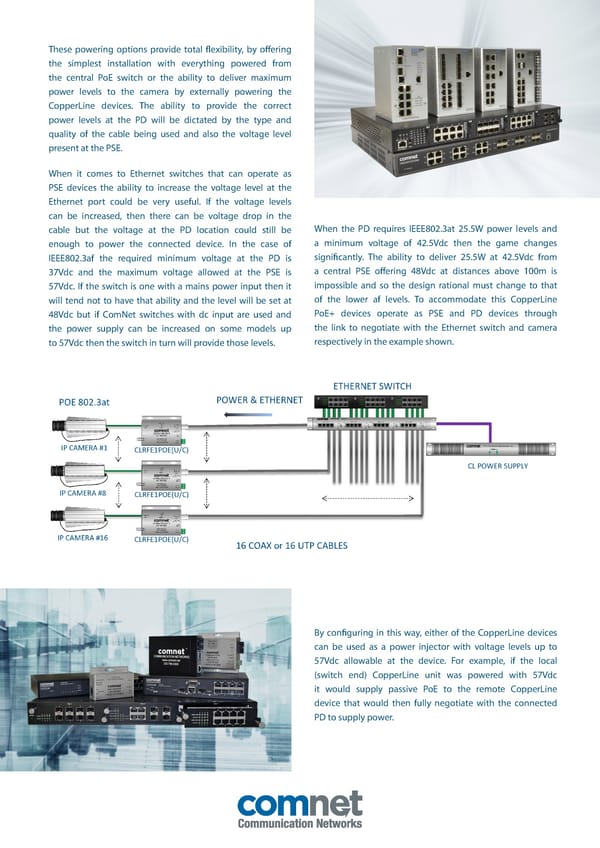These powering options provide total flexibility, by offering the simplest installation with everything powered from the central PoE switch or the ability to deliver maximum power levels to the camera by externally powering the CopperLine devices. The ability to provide the correct power levels at the PD will be dictated by the type and quality of the cable being used and also the voltage level present at the PSE. When it comes to Ethernet switches that can operate as PSE devices the ability to increase the voltage level at the Ethernet port could be very useful. If the voltage levels can be increased, then there can be voltage drop in the cable but the voltage at the PD location could still be enough to power the connected device. In the case of IEEE802.3af the required minimum voltage at the PD is 37Vdc and the maximum voltage allowed at the PSE is 57Vdc. If the switch is one with a mains power input then it will tend not to have that ability and the level will be set at 48Vdc but if ComNet switches with dc input are used and the power supply can be increased on some models up to 57Vdc then the switch in turn will provide those levels. When the PD requires IEEE802.3at 25.5W power levels and a minimum voltage of 42.5Vdc then the game changes significantly. The ability to deliver 25.5W at 42.5Vdc from a central PSE offering 48Vdc at distances above 100m is impossible and so the design rational must change to that of the lower af levels. To accommodate this CopperLine PoE+ devices operate as PSE and PD devices through the link to negotiate with the Ethernet switch and camera respectively in the example shown. By configuring in this way, either of the CopperLine devices can be used as a power injector with voltage levels up to 57Vdc allowable at the device. For example, if the local (switch end) CopperLine unit was powered with 57Vdc it would supply passive PoE to the remote CopperLine device that would then fully negotiate with the connected PD to supply power.
 Comnet Ethernet Page 2 Page 4
Comnet Ethernet Page 2 Page 4